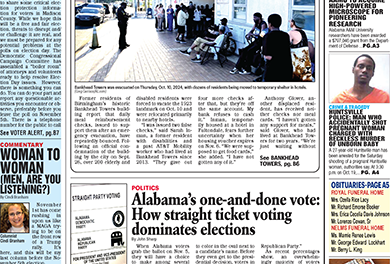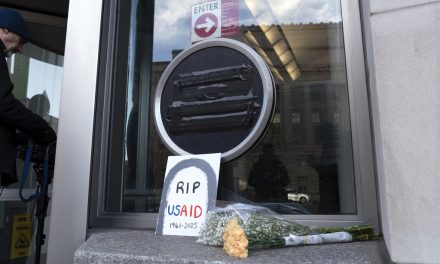By Laura Williamson,
American Heart Association News undefined
People who live in neighborhoods that were subjected to the historical practice of “redlining” may be less likely to receive lifesaving care from a bystander during a cardiac arrest than people in other neighborhoods, new research suggests.
The greater the amount of redlining, the lower the likelihood of receiving bystander CPR, the study showed. The findings will be presented at the American Heart Association’s Scientific Sessions conference in Philadelphia. They are considered preliminary until full results are published in a peer-reviewed journal.
“This study shows us how structural inequities in housing, income and education translate into inequities in health,” said Dr. Marina Del Rios, an associate professor of emergency medicine at the University of Iowa Carver College of Medicine in Iowa City.
“It’s also a reminder that the health care field can’t work in a silo,” said Del Rios, who was not involved in the research. “We need to work with community leaders and policymakers and clinicians to address structural racism or else these health inequities will persist.”
Cardiac arrest occurs when the heart suddenly stops beating. Each year in the U.S., more than 350,000 people have a cardiac arrest outside the hospital. Roughly 90% of them do not survive. People who receive prompt medical attention, including CPR from witnesses or emergency medical personnel, have the greatest chance for survival. Studies show getting immediate CPR may double or triple a person’s likelihood of survival.
Prior research has shown that predominantly Black, Hispanic and lower-income neighborhoods have lower rates of bystander CPR with lower rates of survival from cardiac arrests that happen outside the hospital. The new study looked at cardiac arrests that occurred in neighborhoods subjected to a historical segregation practice known as redlining.
Now illegal, the practice dates back to the 1930s, when U.S. government-insured mortgages were established to boost the economy following the Great Depression. Color-coded maps were created by the now-defunct federal Home Owners’ Loan Corporation ranking a neighborhood’s loan worthiness.
Predominantly Black neighborhoods were colored red and given a low ranking so residents would be denied government loans. The maps rated neighborhoods as “best,” “still desirable,” “declining” and “hazardous.”
In the study, researchers looked at bystander CPR response to 43,186 witnessed cardiac arrests experienced by adults between 2013 and 2021 in the census tracts included in the historical color-coded maps.
Overall, 37% of witnessed cardiac arrests received CPR from bystanders. Rates of bystander CPR declined along with the neighborhood’s grading. Among people having cardiac arrests in neighborhoods historically rated “best” for mortgages, 42% received CPR from a witness, compared to 36% of those who had cardiac arrests in neighborhoods that had been rated “hazardous.”
Dr. Sadeer Al-Kindi, the study’s senior investigator, said the new research highlights places where more education and training are needed to encourage people to provide lifesaving care. “It identifies areas throughout the U.S. that carry a high impact from a lack of bystander CPR performance,” said Al-Kindi, associate director of Cardiovascular Prevention and Wellness at Houston Methodist DeBakey Heart and Vascular Center in Texas. “These are the areas we really want to target.”
After adjusting for age, median household income, the percentage of Black residents and other factors that could have affected the results, researchers found the odds of bystander CPR were still 14% lower in “hazardous” neighborhoods compared to those graded “best.”
“That’s a big, big difference,” said Al-Kindi, who said he expected to see reduced rates of bystander CPR in the redlined areas because of previous research showing disparities in Black and low-income neighborhoods. But he didn’t expect the gap to be so wide.
“Targeted CPR training in redlined communities is imperative,” Del Rios said. Beyond not knowing what to do, some people may hesitate to step in because they distrust the emergency medical system or fear being held liable should something go wrong. Del Rios said targeted training should address these barriers and emphasize that Good Samaritan laws exist to protect people who step in to provide lifesaving care.
For a teen or adult who suddenly collapses, immediately call 911 and begin CPR by pushing in the center of the chest for 100 to 120 beats per minute. 911 operators also can guide rescuers through CPR, although Del Rios said many communities lack dispatcher-assisted CPR. And not all 911 call centers have dispatchers who speak Spanish.
Dispatchers also need training in how to engage with hesitant callers, Del Rios said. “We need to train dispatchers to better communicate with callers,” she said. “It’s not just about giving instructions. They need to also make sure they can address the caller’s concerns and be able to help people understand that starting CPR is a good thing and they will not put the person at risk or be held liable.”
Copyright is owned or held by the American Heart Association, Inc., and all rights are reserved. Permission is granted, at no cost and without need for further request, for individuals, media outlets, and non-commercial education and awareness efforts to link to, quote, excerpt from or reprint these stories in any medium as long as no text is altered and proper attribution is made to American Heart Association News.
Other uses, including educational products or services sold for profit, must comply with the American Heart Association’s Copyright Permission Guidelines. See full terms of use. These stories may not be used to promote or endorse a commercial product or service.
HEALTH CARE DISCLAIMER: This site and its services do not constitute the practice of medical advice, diagnosis or treatment. Always talk to your health care provider for diagnosis and treatment, including your specific medical needs. If you have or suspect that you have a medical problem or condition, please contact a qualified health care professional immediately. If you are in the United States and experiencing a medical emergency, call 911 or call for emergency medical help immediately.
The post People in redlined neighborhoods may be less likely to receive bystander CPR appeared first on AFRO American Newspapers .











